Bringing Duke Buildings Back to Life
Protocols pave way for university buildings to begin safe reopening
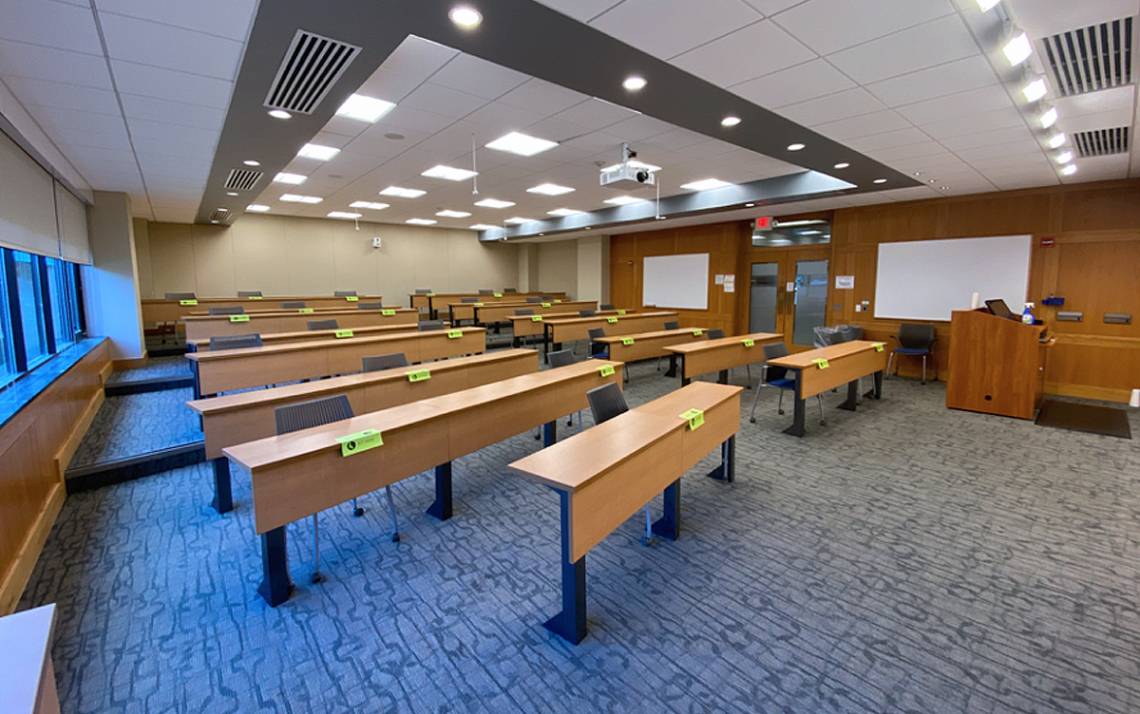
Normally, Crystal Sheffield would have had her hands full right now overseeing summer renovation projects and other administrative tasks that come with the end of a fiscal year and preparing for the start of a fall semester.
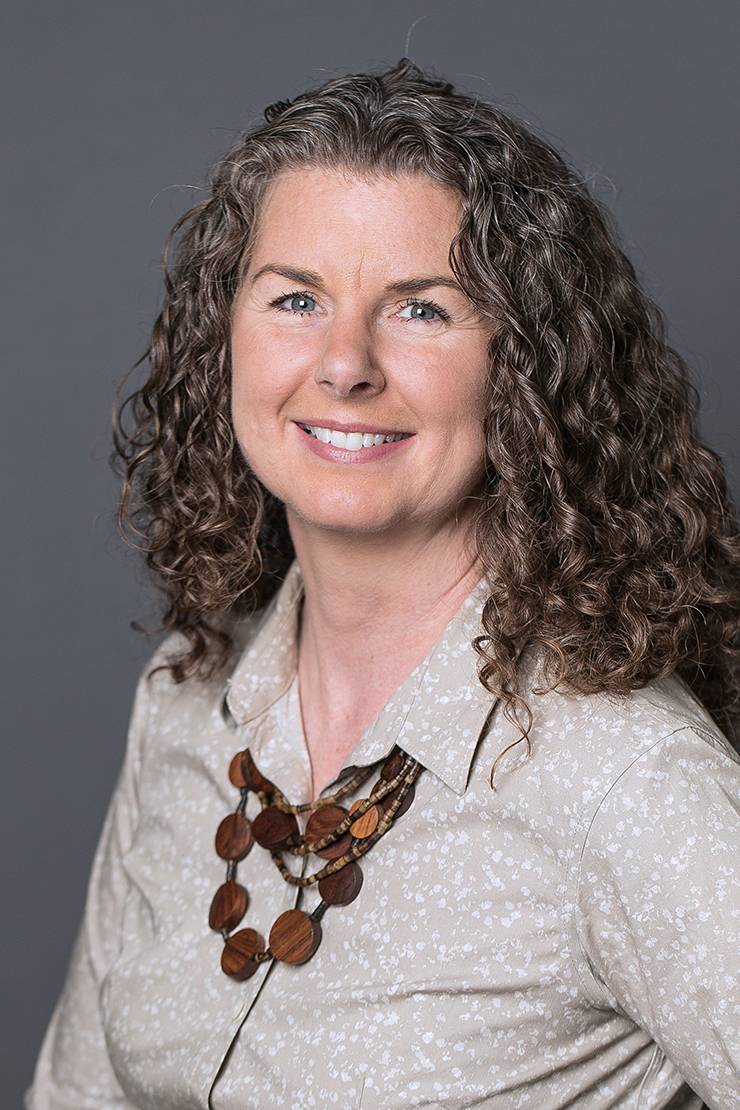 Instead, her attention is focused on carrying out readiness protocols such as placement of hand sanitizer dispensers and the distancing of students in spaces to safely reopen the law school.
Instead, her attention is focused on carrying out readiness protocols such as placement of hand sanitizer dispensers and the distancing of students in spaces to safely reopen the law school.
These tasks are shared by staff members in nearly every corner of Duke as buildings gradually reopen after on campus activities and stay-at-home-orders took effect in March to stop the spread of COVID-19.
“Things are constantly shifting,” said Crystal Sheffield, Duke University Law School’s associate dean for Finance and Administration. “But it’s satisfying to feel like we’re making progress in adapting to the new protocols.”
In August, the university plans to resume residential activity with changes and revised classroom setups to enable students to safely return to campus. For that to happen, Duke Facilities Management is helping schools and departments get ready to reopen with safety measures in place, even while being prepared to change plans based on public health and other considerations.
By August 10, after working closely with designated coordinators in schools and departments, the plan is to have roughly 150 buildings and around 50 leased spaces ready for a limited number of faculty, staff and eventually students.
“It’s been a team effort,” said John Noonan, said vice president for Facilities Management.
Here’s a look at what’s gone into reopening some corners of campus.
Creating Space for Class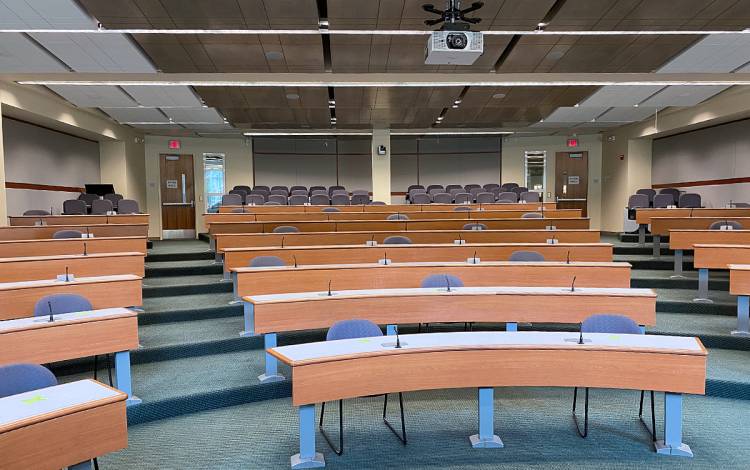
With a capacity of 159 students, classroom 3041 is the biggest in the Duke Law School’s building.
But when students return for the fall semester, only around 30 students will be allowed in at one time to allow for social distancing. Wearing masks, they’ll sit in chairs positioned six feet from the nearest classmate.
“We had to start from one point, take a tape measure and swing it around in every direction so we could figure out where to put our next seat,” said Sheffield, the associate dean at Duke Law.
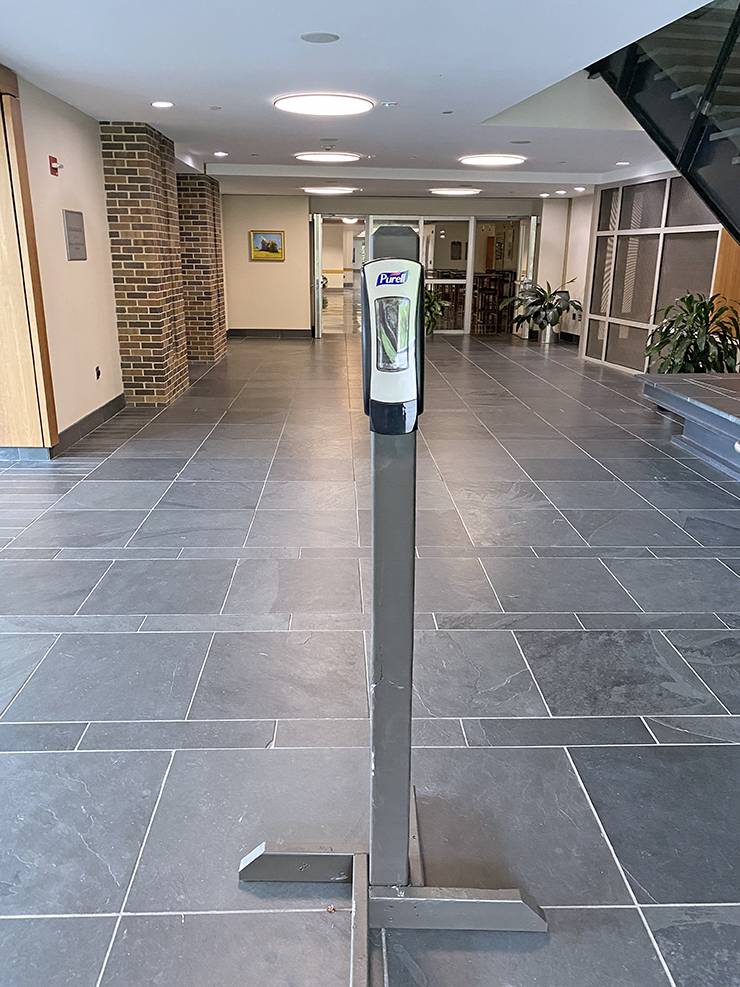 The law school building, which Sheffield oversees, reopened on July 6, meaning a limited number of staff and faculty could enter the building after completing a daily symptom monitoring evaluation and alerting Sheffield. A few days after the reopening, the hallways of the school were still mostly empty because most faculty and staff will continue working remotely.
The law school building, which Sheffield oversees, reopened on July 6, meaning a limited number of staff and faculty could enter the building after completing a daily symptom monitoring evaluation and alerting Sheffield. A few days after the reopening, the hallways of the school were still mostly empty because most faculty and staff will continue working remotely.
The reopening capped a two-week process – led by Duke’s Facilities Management - that included cleaning the building, flushing the water system, installing signage and ensuring hand sanitizing stations were in place. Before that, it was up to Sheffield and her team to come up with a plan that would both meet protocols and standards in Duke’s Building Re-Opening Toolkit and the needs of the school.
While there’s still plenty of work to be done figuring out the specifics about the coming academic year, the fact that Sheffield’s building is ready to welcome some of her colleagues back is a positive step.
“We don’t know what everything will look like this fall, but we will be able to have faculty, staff and students in the building, albeit to a lesser degree,” Sheffield said. “We have the building prepared so the people who need to be in the building to most effectively do their jobs can come back.”
Getting a Head Start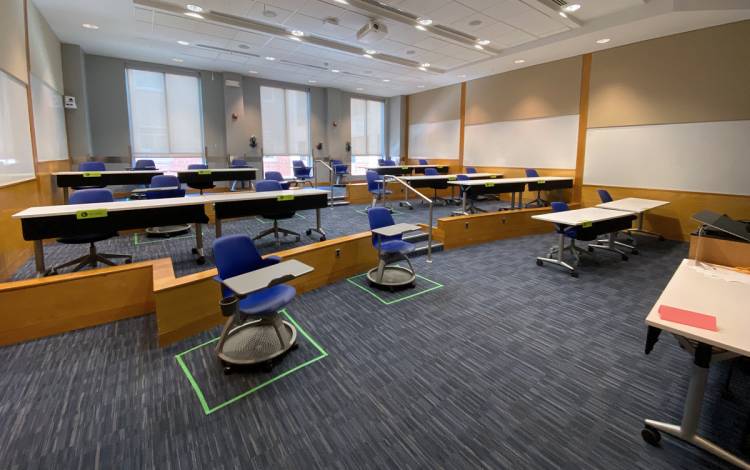
With cleaning plans in place and seats spaced far apart, the classrooms, teaching labs and communal spaces of Pratt School of Engineering are preparing to welcome students and faculty in August.
Pratt’s footprint covers around 304,000 square feet in six campus buildings and off-campus leased spaces. It’s a mix of academic space – such as classrooms and teaching labs – and research labs.
The reopening of Duke’s research labs began in May, and by early June, most of Pratt’s research labs were operating with physical distancing and safety precautions. That gave many in the Pratt community an early taste of the symptom monitoring system that other students, staff and faculty will use when they return to campus.
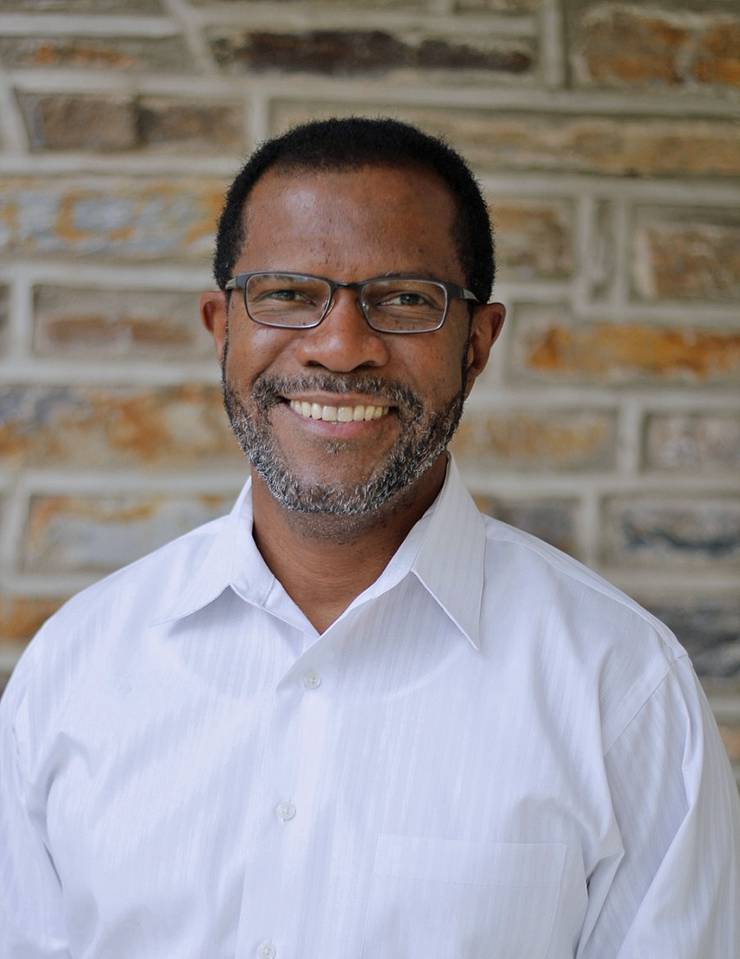 It also gave Pratt a jump on logistical issues such as controlling the flow of people in and out of buildings by monitoring entries and exits. Earlier this spring they adopted a system for handling deliveries that included a security guard stationed at the loading dock of the Fitzpatrick Center for Interdisciplinary Engineering, Medicine and Applied Sciences to ensure no items or people entered the complex without adhering to safety protocols such as wearing masks, having temperatures checked and completing a daily symptom monitoring form.
It also gave Pratt a jump on logistical issues such as controlling the flow of people in and out of buildings by monitoring entries and exits. Earlier this spring they adopted a system for handling deliveries that included a security guard stationed at the loading dock of the Fitzpatrick Center for Interdisciplinary Engineering, Medicine and Applied Sciences to ensure no items or people entered the complex without adhering to safety protocols such as wearing masks, having temperatures checked and completing a daily symptom monitoring form.
The steps sped up the process of preparing the non-research areas to open.
“At the same time we were working on reopening the labs, there was a parallel effort, all done remotely, to talk about classes,” said George Truskey, Pratt’s senior associate dean.
Over the past several weeks, Pratt School of Engineering Director of Facilities Mitchell Vann and his colleagues have worked out capacities for Pratt classrooms and labs, rearranged public gathering spaces and worked with Facilities Management to ensure that all of Pratt’s buildings have proper signage, hand sanitizer and cleaning plans to plan for the return of limited numbers of students, staff and faculty.
“We’ve never seen anything like this before,” Vann said. “So we leaned on the experts, and the people who are working really hard in university leadership, our leadership here at Pratt and campus and Pratt colleagues. We’ve been fortunate to have all that accumulated knowledge, advice, foresight, planning and work. For me, it feels like we had a lot of guidance, we just needed to make it a reality for us.”
Back in the Game
While uncertainty remains about when seasons will begin for Duke athletes, getting the facilities of Duke Athletics ready for a return has been a priority.
And with more athletes, coaches, staff members and facilities involved than any other sport, and preseason workouts that begin in July, Duke’s football program was at the top of the reopening list.
On June 22, the first few coaches and staff members returned to workspaces in the Yoh Football Center after Duke Athletics and Facilities Management teamed up to get the building, which had been essentially empty since mid-March, reopened.
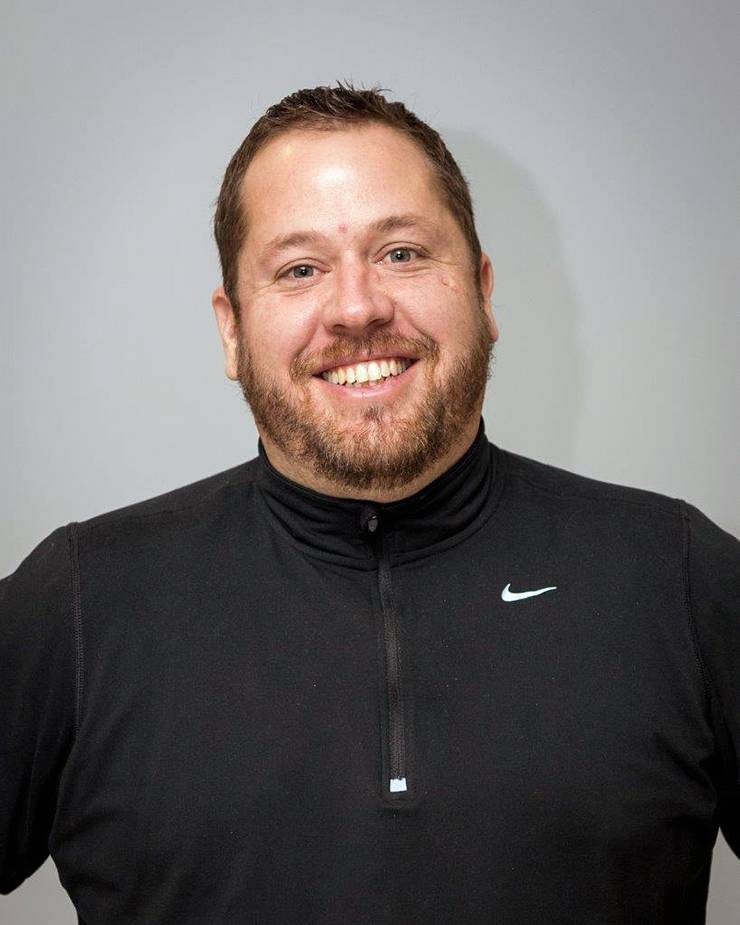 Now hand sanitizer stations, spray bottles with disinfectant and signs with instructions on cleaning procedures, directions for traffic flow and reminders to wear masks are commonplace around the building.
Now hand sanitizer stations, spray bottles with disinfectant and signs with instructions on cleaning procedures, directions for traffic flow and reminders to wear masks are commonplace around the building.
Staff and students will use the space much differently, said Bob Weiseman, senior associate director of athletics for athletic facilities, game operations and championships. Most staff members work alone in offices and meetings take place in the massive 110-seat team meeting room, where people now sit in seats spread around the room, most with nametags.
The football team is split between two lockers rooms – one in the Yoh Football Center and the other at the Brooks Football Building. Team functions that used to take place at the Yoh Football center will now be spread between other facilities such as Blue Devil Tower.
And addition to their workout gear, each player will receive face masks, hand-sanitizer and a copper tool that will allow them to open doors without touching them.
“It’s like the first day of practice,” Weiseman said in advance of the players’ return. “You have some anxiety about what the day is going to bring, all of the things that could possibly go wrong, all of the things that could possibly go right. But there is some excitement. You just hope that the effort that we put into it, and what we do moving forward, is correct and appropriate because the thing we’re most concerned about is the health and safety of our students, coaches and staff.”
Help share the proactive and extensive work being done by all Duke community members during the COVID-19 outbreak. Send ideas, shout-outs and photographs here or write working@duke.edu.